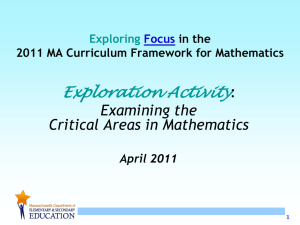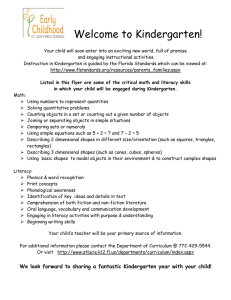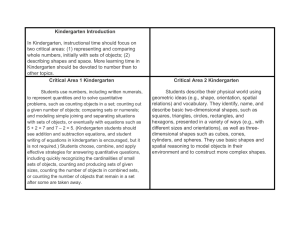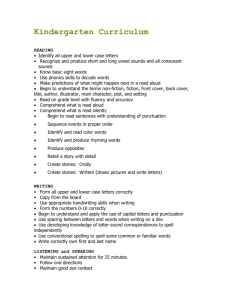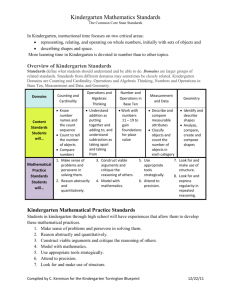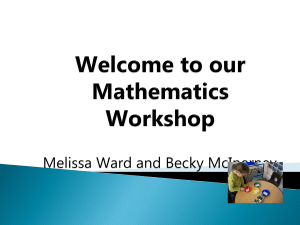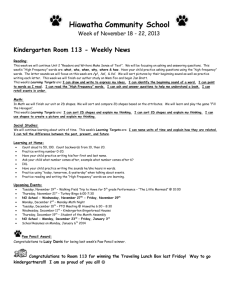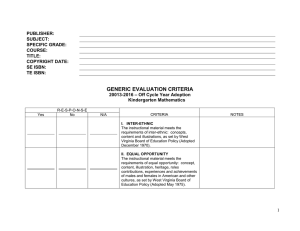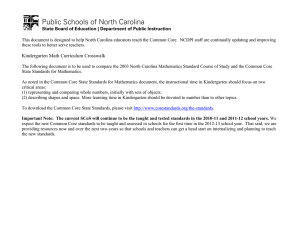Mathematics Philosophy
advertisement
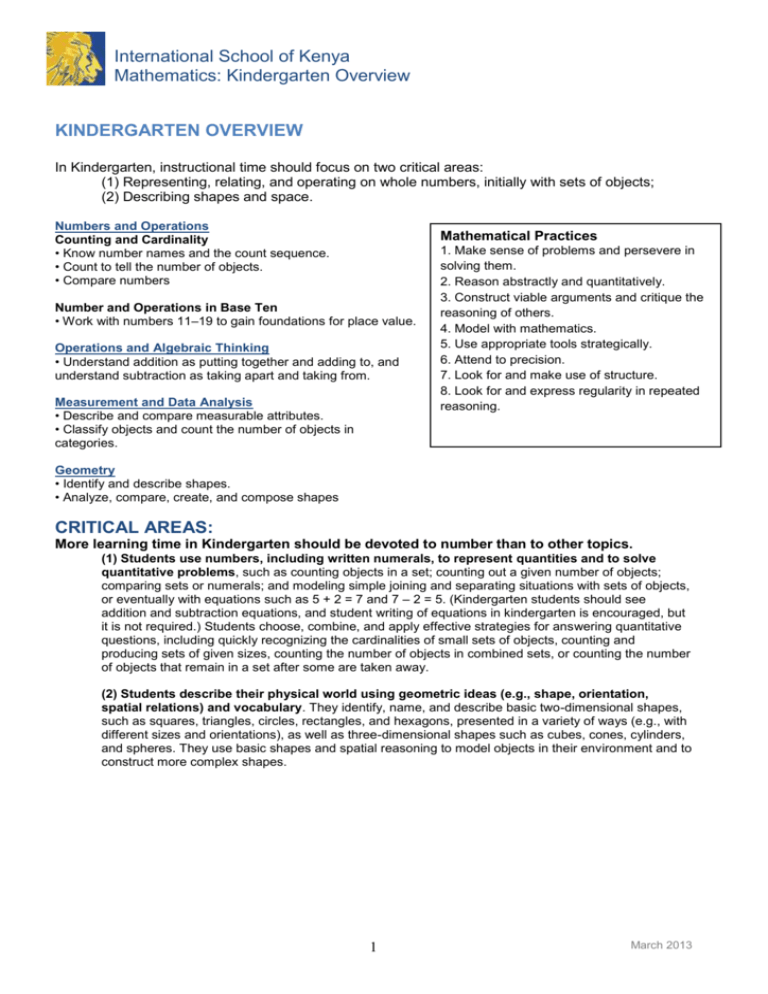
International School of Kenya Mathematics: Kindergarten Overview KINDERGARTEN OVERVIEW In Kindergarten, instructional time should focus on two critical areas: (1) Representing, relating, and operating on whole numbers, initially with sets of objects; (2) Describing shapes and space. Numbers and Operations Counting and Cardinality • Know number names and the count sequence. • Count to tell the number of objects. • Compare numbers Mathematical Practices Number and Operations in Base Ten • Work with numbers 11–19 to gain foundations for place value. Operations and Algebraic Thinking • Understand addition as putting together and adding to, and understand subtraction as taking apart and taking from. Measurement and Data Analysis • Describe and compare measurable attributes. • Classify objects and count the number of objects in categories. 1. Make sense of problems and persevere in solving them. 2. Reason abstractly and quantitatively. 3. Construct viable arguments and critique the reasoning of others. 4. Model with mathematics. 5. Use appropriate tools strategically. 6. Attend to precision. 7. Look for and make use of structure. 8. Look for and express regularity in repeated reasoning. Geometry • Identify and describe shapes. • Analyze, compare, create, and compose shapes CRITICAL AREAS: More learning time in Kindergarten should be devoted to number than to other topics. (1) Students use numbers, including written numerals, to represent quantities and to solve quantitative problems, such as counting objects in a set; counting out a given number of objects; comparing sets or numerals; and modeling simple joining and separating situations with sets of objects, or eventually with equations such as 5 + 2 = 7 and 7 – 2 = 5. (Kindergarten students should see addition and subtraction equations, and student writing of equations in kindergarten is encouraged, but it is not required.) Students choose, combine, and apply effective strategies for answering quantitative questions, including quickly recognizing the cardinalities of small sets of objects, counting and producing sets of given sizes, counting the number of objects in combined sets, or counting the number of objects that remain in a set after some are taken away. (2) Students describe their physical world using geometric ideas (e.g., shape, orientation, spatial relations) and vocabulary. They identify, name, and describe basic two-dimensional shapes, such as squares, triangles, circles, rectangles, and hexagons, presented in a variety of ways (e.g., with different sizes and orientations), as well as three-dimensional shapes such as cubes, cones, cylinders, and spheres. They use basic shapes and spatial reasoning to model objects in their environment and to construct more complex shapes. 1 March 2013
